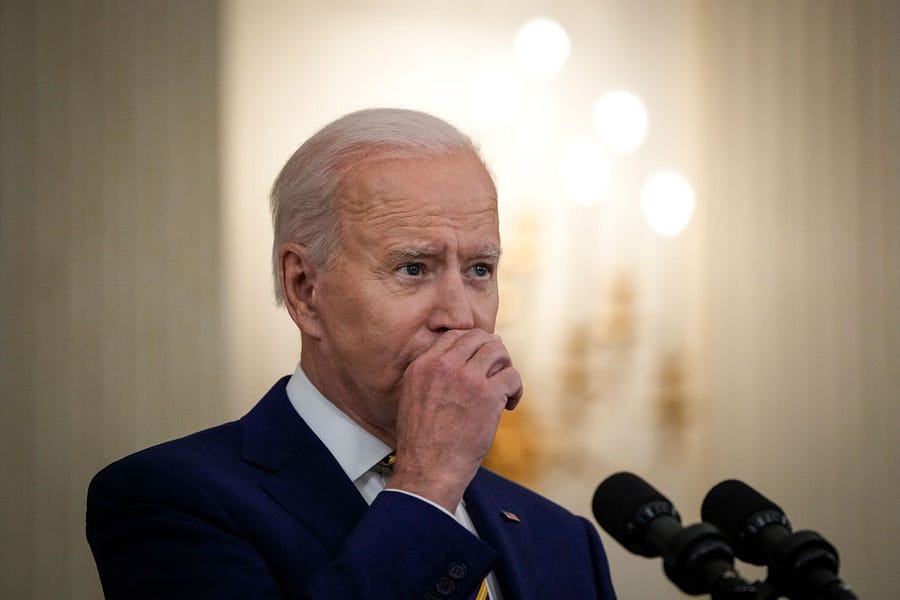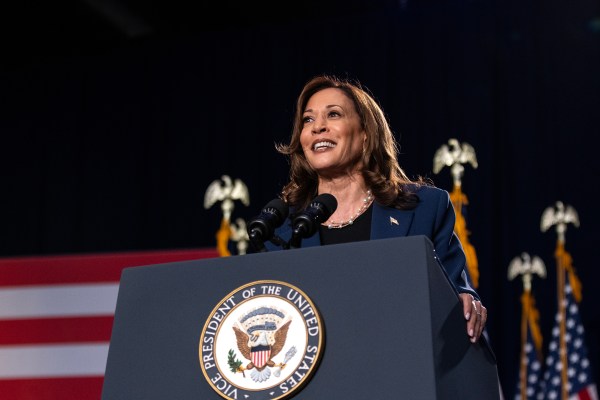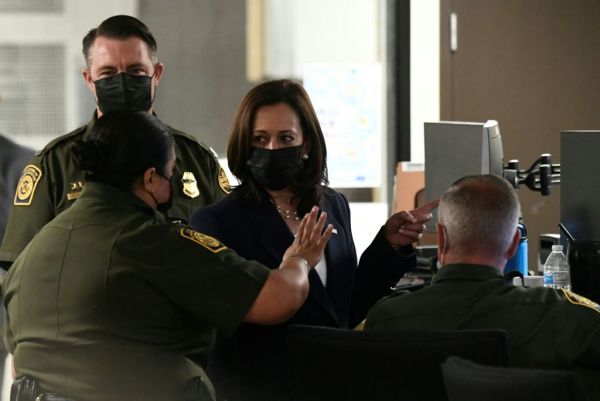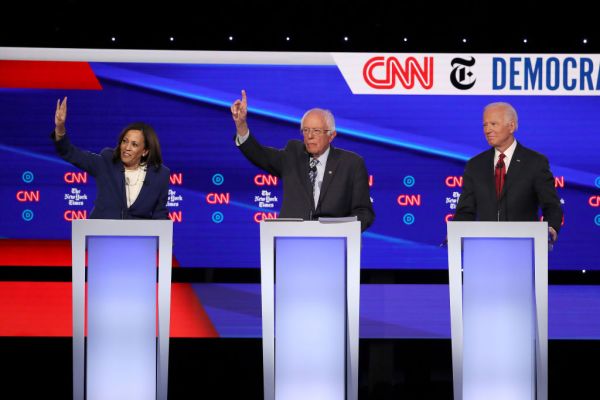After more than two months of intense negotiations in Vienna, the odds are high that at some point this summer, the United States and Iran will agree to restore the 2015 nuclear agreement known as the Joint Comprehensive Plan of Action (JCPOA). When they do, President Joe Biden will have a serious challenge on his hands. The backlash in Congress—from Republicans, for sure, but at least a few Democrats as well—will be fierce. So, too, will come near-universal opposition from America’s most important Middle East partners, especially Israel. Biden would be well-advised to try to mitigate the battle royale to come, and the damage it could inflict on his presidency, by finding ways to reassure JCPOA skeptics that he is committed to addressing their legitimate concerns.
Though Biden and most of his top national security aides were directly involved in crafting the JCPOA, to their credit they now concede that the agreement had significant flaws that require correction. The shorthand they’ve developed to capture that insight is the need for a “longer, stronger, broader” deal. In other words, lengthen the timelines for lifting key restrictions on Iran’s nuclear program. Toughen the inspection and verification regime for determining whether Iran has been engaged in illicit nuclear activities. And expand the deal’s scope to include Iran’s most worrying non-nuclear behaviors, in particular its missile and drone program, as well as its backing for terrorist proxies across the Middle East.
So far, so good. On these broad objectives, there’s virtually no daylight between the administration and its critics. But where things break down is over how best to get to “longer, stronger, broader” and whether the JCPOA has any role to play in the process.
Biden and his team have answered unequivocally: “Yes.” They believe that resurrecting the JCPOA is essential. They argue that former President Donald Trump’s withdrawal in 2018 was a grievous error. Rather than compelling Iran to negotiate a better deal, they claim that it provided Iran an excuse to stop complying with the deal’s restrictions and expand its nuclear program in dangerous ways—accumulating more and more enriched uranium, at higher and higher levels of purity, using increasingly powerful centrifuges. As a result, rather than being at least a year away from producing the fissile material for a nuclear weapon—as was the case under the JCPOA—Iran today may be as little as two to three months from a possible nuclear breakout, with the timeline steadily shrinking.
According to the administration, trying to bypass the JCPOA by negotiating an entirely new deal from scratch would simply take too long. In the meantime, Iran would continue moving ever-closer to a nuclear weapons capability. In contrast, a rapid return to the JCPOA would not only stop Iran’s nuclear advancement in its tracks, it would significantly roll its program back—thereby short-circuiting a brewing crisis that might otherwise have left Biden with no near-term option but war to prevent Iran from becoming a nuclear-weapons threshold state.
However, administration officials insist that the process would not stop there. Restoring the JCPOA, they suggest, would be a necessary, but insufficient, first step for reining in the Iranian threat; not the end but the beginning of a larger U.S.-led diplomatic effort. With the breathing room gained from returning to the JCPOA—Biden’s advisers call it putting Iran’s nuclear program back in a box—the administration claims that it would then have the necessary time and space to launch follow-on negotiations to achieve its longer, stronger, broader objectives.
It’s at this point that the administration’s critics, not without justification, erupt in incredulous guffaws. They note that reentering the JCPOA will require the United States to lift all its most powerful oil and banking sanctions that have devastated Iran’s economy. Once that pressure has been surrendered, they rightly ask, what leverage will Biden have to convince Iran to negotiate even more far-reaching constraints on its nuclear program and other malign activities, especially since the Iranian regime has repeatedly said that it has no intention of ever doing so?
It’s an excellent question for which the administration has yet to develop a coherent, much less compelling response. “We have additional carrots to offer Iran,” some officials hint, particularly the promise of a more open trade and investment relationship with the United States, the world’s richest market. But just how enticing would that prospect really be for Iran? For the entirety of its 42-year existence, the revolutionary regime’s anti-American posture has been absolutely essential to its claim to power. Once free to do business again with the rest of the world, how likely is it to compromise its raison d’etre on the altar of normalized commercial ties with the Great Satan?
“We will also have sticks,” administration officials insist. They’re primarily referring to the fact that after Washington is again a member in good standing of the JCPOA, it will in theory be able to invoke the deal’s snapback mechanism, reimposing not only all U.S. sanctions on Iran, but all United Nations sanctions as well. Biden and others have suggested that the threat of renewed economic devastation will be a powerful lever for convincing Iran to go along with U.S. demands for subsequent agreements. Furthermore, the Biden team notes that, in stark contrast to the Trump era, its efforts to pressure Iran would have the backing of our strongest European allies in the JCPOA—Britain, France, and Germany, the so-called EU-3—who have enthusiastically applauded the administration’s readiness to return to the deal.
On its face, the snapback threat isn’t peanuts. It couldn’t easily be dismissed by an Iranian regime that badly needs to deliver economic relief to its disgruntled population. But how credible would the threat really be? A strict reading of the JCPOA suggests that snapback is available only in response to significant violations of the deal’s nuclear restraints. Not a single clause says anything about an Iranian obligation to engage in follow-on talks to lengthen, strengthen, and broaden the deal. So just how willing is Biden going to be to blow up the JCPOA and trigger a major international crisis if Iran remains in compliance with the various restrictions set out within the deal’s four corners? After all, didn’t Biden and every one of his top advisers excoriate Trump for doing precisely that just three years ago, i.e., reimposing sanctions in the hopes of getting a better deal at a time when Iran was widely judged to be abiding by its commitments?
As for the value of European goodwill in any future effort to strengthen the deal, Sen. Robert Menendez, the Democratic chairman of the Foreign Relations Committee, captured the deep skepticism of the administration’s critics well when he told Secretary of State Antony Blinken during a recent hearing that “I hope that as we’re assuaging our European colleagues in this effort that they are truly committed to the stronger part because my experience is that they want to solve the immediate problem, but getting them to follow-up on the longer-term problems is a much more difficult proposition.”
If all that emerges from the Vienna negotiations is a revived JCPOA and a series of vague and unenforceable references to snapback, European support, and future talks, Biden will be asking for big trouble. None of the skeptics, either at home or in the Middle East, will believe that the administration is serious about “longer, stronger, broader.” They’ll savage it for tacitly condoning Iran becoming a nuclear-weapons threshold state when the JCPOA expires in less than a decade and lifting sanctions that will result in tens of billions of dollars being funneled to Iran’s terrorist empire.
If it’s smart, the administration should be looking for concrete ways to bolster the credibility of its commitment to going beyond the JCPOA. While there’s no doubt that any restoration of the deal will be highly controversial, there are steps that Biden could take to at least mitigate the blowback and reassure at least some of his critics that he’s not just looking for an easy way to put the Iranian nuclear issue on the back burner and forget about it.
The most obvious: A signed letter from Biden to the leaders of Congress, as well as his counterparts in Israel, Saudi Arabia, and the United Arab Emirates in which he gives his personal commitment to invoke snapback and reimpose all U.S. sanctions if a better deal is not agreed within a specific timeframe—for example, before the end of 2023. There should be a similar letter, signed by the leaders of Britain, France, and Germany , committing their nations to do the same. That kind of solemn pledge, memorialized in writing, will make the commitment to longer, stronger, broader far more real and credible.
Two other steps that Biden should take: First, make an unequivocal declaration about his determination to use all necessary options, including military force, should diplomacy fail to prevent Iran from becoming a nuclear weapons threshold state. His three immediate predecessors all did. Biden, conspicuously, has not. People have noticed, no doubt including the Iranians.
Second, Biden should make it clear that the restoration of the JCPOA will not affect U.S. support for Israel’s freedom of action should it decide that the Iranian nuclear program poses an intolerable threat to its security. Biden should look for ways to put real teeth on that commitment by increasing Israel’s intelligence gathering capabilities against the Iranian target, as well as its ability to act on its own militarily to destroy it. Figuring out a way to give Israel access to the full range of U.S. bunker-busting bombs, up to and including its most powerful one, the so-called Massive Ordnance Penetrator, or MOP, would be a good start.
Politically speaking, there’s no escaping the fact that the restoration of the JCPOA is going to be a bloody affair. Along with a Republican bill of indictment focused on accusations of socialism, defunding the police, and indoctrinating children to hate the United States through critical race theory, the charge that the administration has embarked on a full-blown policy of appeasing Iran, the world’s leading state sponsor of terrorism, and betraying the interests of our closest Middle East partners, is precisely the kind of foreign policy issue that, at the margins, could have great resonance among the swing voters who will decide whether Democrats maintain their slim majorities in Congress in 2022, as well as their control of the White House in 2024. Biden ignores its potential power to harm his presidency at his own peril. Taking prudent measures to blunt that narrative’s force by significantly bolstering his administration’s commitment to go beyond the JCPOA makes eminent sense. The fact that those steps might also improve the chances of advancing his professed goal of achieving a longer, stronger, broader set of arrangements to constrain the Iranian threat should make it a no-brainer.
John Hannah, senior fellow at the Jewish Institute for National Security of America, served as former Vice President Dick Cheney’s national security adviser.








Please note that we at The Dispatch hold ourselves, our work, and our commenters to a higher standard than other places on the internet. We welcome comments that foster genuine debate or discussion—including comments critical of us or our work—but responses that include ad hominem attacks on fellow Dispatch members or are intended to stoke fear and anger may be moderated.